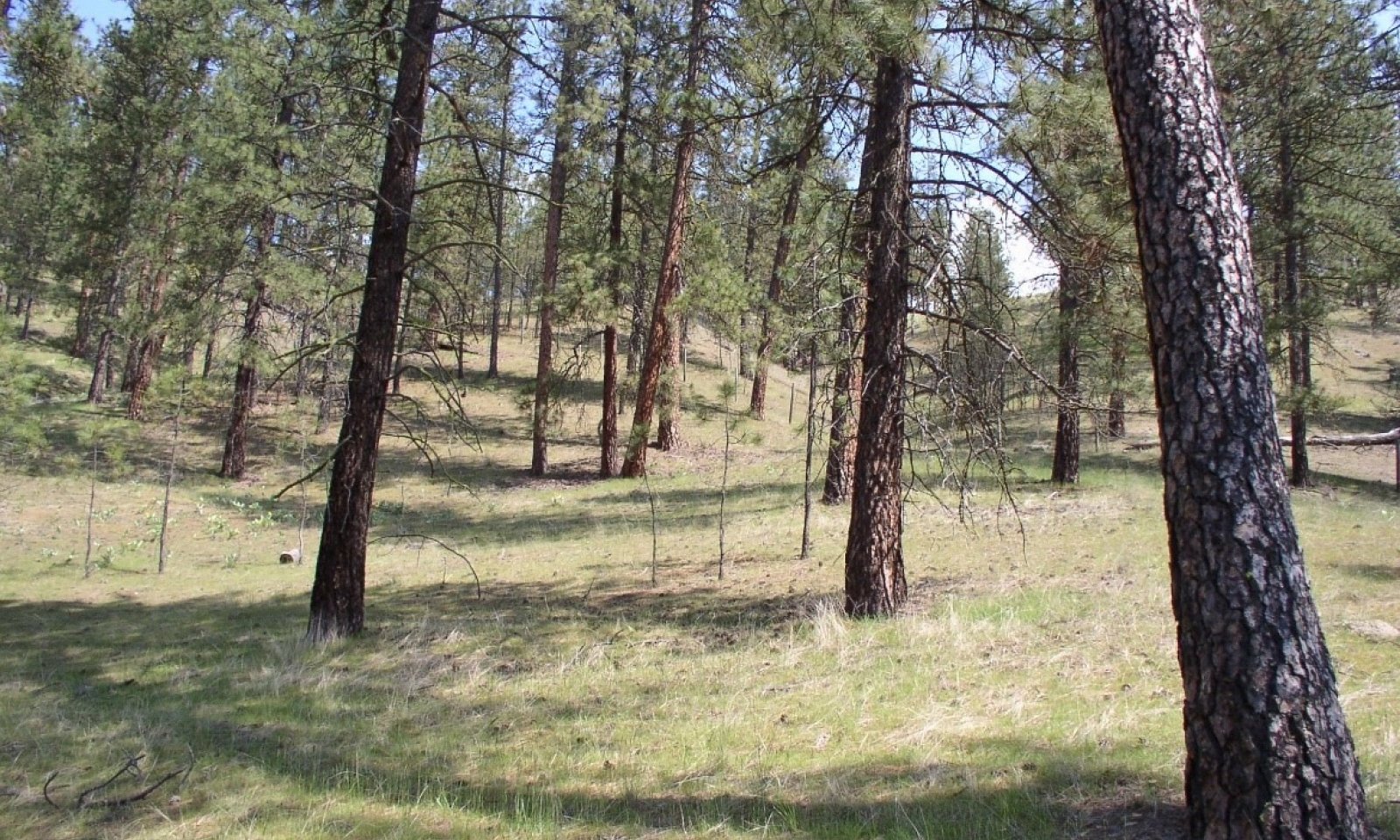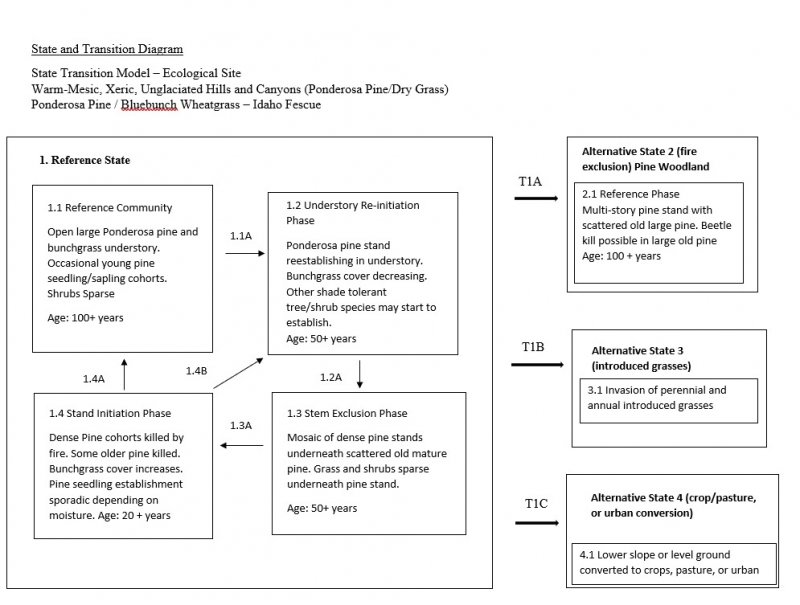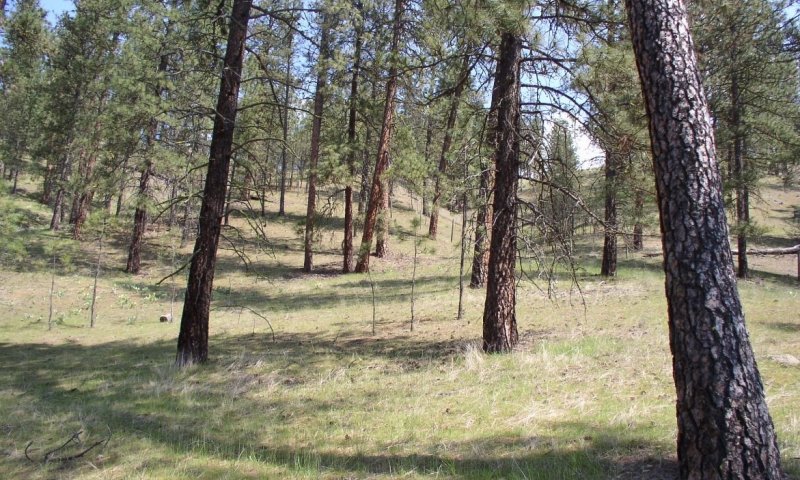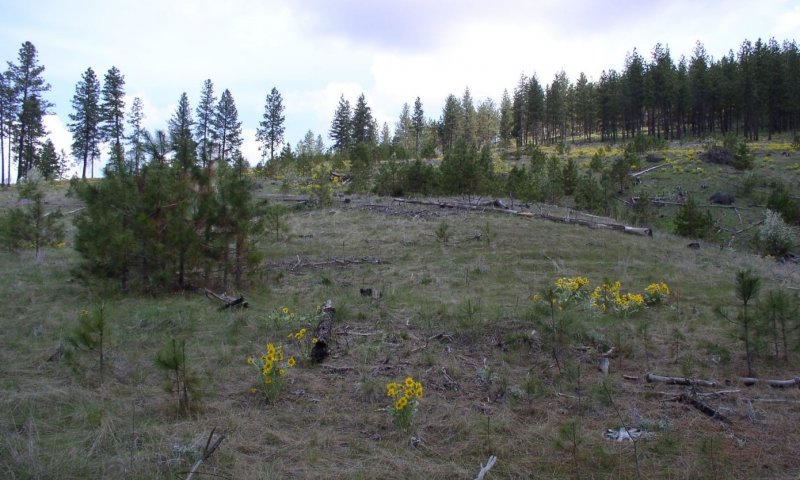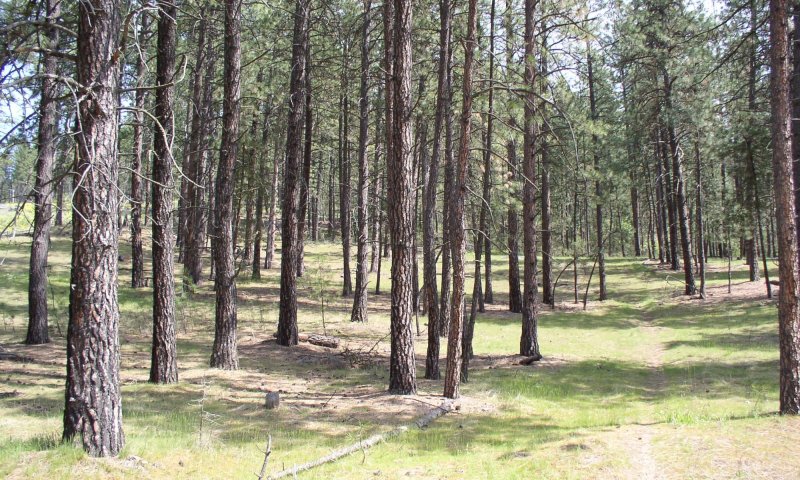Ecological dynamics
Ecological Dynamics of the Site
This reference site is located on very warm dry slopes with ponderosa pine the only tree species with an understory of mainly bluebunch wheatgrass, Idaho Fescue, and some needle and thread grass. Tree stocking is low with large open grown ponderosa pine and small amounts of sapling/pole size pine in understory. Frequent ground fires every 10-15 years kept pine regeneration low and perpetuated this condition with a dominant grass understory. With fire exclusion a mosaic of pine cohorts underneath the large pine survive and a patchy woodland develops. In addition, some woodland shrubs may establish and an occasional Douglas-fir may be present. Stands in this altered state are subject to beetle kill and mistletoe infestation. Soils are mainly sandy loams or loamy sands. The main habitat types included in this ecological site are Ponderosa pine/blunchwheat grass and Ponderosa pine/Idaho fescue.. The bluebunch wheatgrass sites occur on the warmer drier slopes and the Idaho fescue sites occur on the lower slopes and more level terrain. Both habitat types have similar ecological processes as described above. The fescue sites will have more pine stand density due to a little more moisture and topographic position.
State 1
Reference
This state is dependent on the occurrence of frequent low intensity ground fires keeping an open grown pine stand with a dominant ground cover of bunchgrass. When fire intervals are infrequent pine regeneration can survive and a patchy pine woodland develops underneath the large old pine. With drought stress the large old pine can be subject to beetle kill and the understory pine stands subject to dwarf mistletoe infestation. It is also possible to have a stand replacement fire when stand density is increased and ladder fuels can reach the larger pine crowns.
Forest productivity is measured using site index (SI) and culmination of annual increment (CMAI). Ponderosa pine is the key tree species and site indexes ranges greatly depending on local site characteristics. Available data indicates a mean site index of 100 using (Meyer, 1961) with a CMAI of 102 cu. ft./yr at age 40 years.
The bulk of grass production is bluebunch wheatgrass and Idaho fescue. Other grass species included needle and thread grass, prairie junegrass, rough fescue, pine grass and sandberg bluegrass. The most prominent forbs were lupine, basalmroot, pussytoes, hawkweed, and yarrow. Shrubs tend to be present in only trace amounts. Tree regeneration is mostly ponderosa pine with an occasional Douglas-fir.
Community 1.1
Reference Community
Large open grown pine with bunchgrass understory. Pine canopy coverage may range from 10 – 30%. Understory dominated by bluebunch wheat grass on the drier sites and Idaho fescue on the moister sites. Other key understory species include arrowleaf basalmroot, western yarrow, buckwheat, and needle and thread grass.
Dominant plant species
-
ponderosa pine (Pinus ponderosa), tree
-
buckwheat (Eriogonum), shrub
-
bluebunch wheatgrass (Pseudoroegneria spicata), grass
-
Idaho fescue (Festuca idahoensis), grass
-
needle and thread (Hesperostipa comata), grass
-
pinegrass (Calamagrostis rubescens), grass
-
prairie Junegrass (Koeleria macrantha), grass
-
Sandberg bluegrass (Poa secunda), grass
-
lupine (Lupinus), other herbaceous
-
arrowleaf balsamroot (Balsamorhiza sagittata), other herbaceous
-
pussytoes (Antennaria), other herbaceous
-
common yarrow (Achillea millefolium), other herbaceous
-
white hawkweed (Hieracium albiflorum), other herbaceous
Community 1.2
Understory Re-initiation Phase
Understory pine starts to establish. Bunchgrass cover reduced. Woodland shrubs and fir may establish at higher elevations.
Community 1.3
Understory Stem Exclusion Phase
Understory pine stands start to decline through competition. Snags and woody debris develop. Beetle kill possible. Stand susceptible to stand replacing fire with possible large old pine killed. Mixed severity fire will thin out understory pine stand, woodland shrubs and kill fir regeneration. Bunchgrass cover will increase.
Community 1.4
Stand Initiation Phase
Understory pine stand killed by fire, some larger overstory pine killed. Bunchgrass cover increased. Sporadic pine regeneration dependent on moisture, topographic position, and good seed crop years.
Pathway 1.1B
Community 1.1 to 1.2
Understory Re-initiation Phase
Time. Lack of fire allowing pine regeneration to survive in a patchy mosaic underneath overystory pine. Some woodland shrubs like snowberry, serviceberry, chokecherry and rose species may establish. Occasionally a Douglas-fir may establish in this condition. A mixed severity fire will thin out the understory pine stand and kill the shrubs and Douglas-fir.
Pathway 1.2B
Community 1.2 to 1.1
Understory Re-initiation Phase
Ground fires reoccur returning site to open pine/grass site
Pathway 1.2A
Community 1.2 to 1.3
Time, continued lack of fire allowing pine cohorts to form dense stands.
Pathway 1.3A
Community 1.3 to 1.4
Stand replacing fire, dense understory pine stands killed, some large overstory pine survive
Pathway 1.4A
Community 1.4 to 1.1
Natural fire interval resumes, maintaining open pine stand with abundant bunchgrass.
Pathway 1.4B
Community 1.4 to 1.2
Understory Re-initiation Phase
Lack of reoccurring fire causing increase in pine establishment.
State 2
Fire Exclusion
Fire Exclusion for 50+ years leads to a light to medium dense pine woodland with all ages present. Canopy cover ranges from 30- 60%. Canopy cover will be higher in the pine/fescue habitat. Mixed severity fires will create a mosaic of pine stands between burned areas which will seed in with pine maintaining a multi-level pine woodland.
Community 2.1
Plant Community Phase 2.1
Reference phase depicted by multi-level pine stand with scattered old pine over all aged pine. Stand density light to medium in patchwork of pine cohorts of large old pine.
State 3
Invaded
Invasion of introduced perennial and annual cool season grasses from adjacent pastures, homesteads, and abandoned areas. One particular annual grass of concern from past overgrazing is the invasion of cheat grass. Once it gets established in the understory it will prevent native bunchgrasses from reestablishing and restoring site.
State 4
Converted
Lower level terrain converted to crops, pasture or urban development. Much of the ponderosa pine ESDs are adjacent to local towns and cities. They have been converted to housing developments, shopping malls, or urban recreation areas. In the more rural areas, these sites have been converted to pastures and dry or irrigated cropland.
Transition T1A
State 1 to 2
The natural fire regime intervals changed to 50+ years allowing understory pine regeneration to survive and grow creating more of a woodland site. Older larger pine now more susceptible to mortality from stand replacing fire.
Transition T1B
State 1 to 3
Invasion of introduced perennial and annual grasses which outcompete native bunchgrasses
Transition T1C
State 1 to 4
Land converted to crop, pasture, or urban development
Restoration pathway R2A
State 2 to 1
Overstory thinning and understory burning for specified time intervals to return site to Reference State 1.
Restoration pathway R3A
State 3 to 1
Site preparation, native grass reseeding, weed control, grazing protection followed by prescribed burning after establishment to maintain site in reference plant community.
